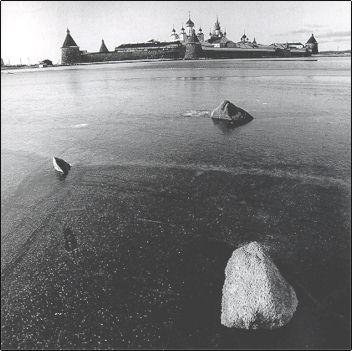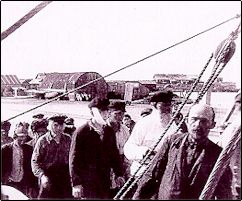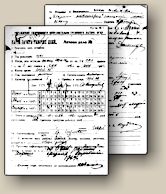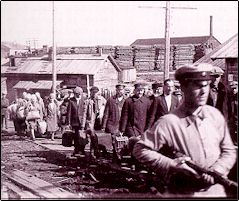| Solovki | |
 |
The Solovetsk Special Camp -- according to
Aleksandr Solzhenitsin -- may be considered as the "mother of the
GULAG". This camp was neither the biggest nor most brutal, yet it became
a model camp where the NKVD developed and tested security measures,
"living conditions", production norms for prisoners, and all possible
methods of repression. The exact number of prisoners who went through
the camp during 1923-1939 is still unknown. Estimates range between tens
and hundreds of thousands. Photo by Tomasz Kizny
|
| Scroll
|
|
Read these documents to learn more about living conditions in the camp: |
|

|
|
| Solovki is a symbol of the new
system's attitude to religion and tradition. Three historic monasteries
located on a remote island in White Sea were turned into a camp to
isolate political opponents of the new regime: White Army officers,
members of opposition parties, participants of counter-revolutionary
uprisings. Soon Solovetsk became one of the first "corrective labour camps". A wave of repression of a scale never seen before brought hundreds of thousands arrested people to camps, where their destination is to become a work-force performing economic tasks. At the end of 1936 the Solovetsk camp was reorganized into a prison and then shut down in 1939 to make way for a naval base. The devastation of church buildings continued well into the 1960s, when restoration work was initiated. The influx of military families and conservators brought new life to the islands. Today, the settlement around the monastery has a population of about one thousand. The Orthodox Church reestablished itself here in 1988, and in 1992 the Solovetsk monastery complex was included in UNESCO's World Heritage List. The only known iconographic record from the time of the camp's existence is the propaganda film "Solovki", made in the Twenties for the purposes of promoting the "new penitential policy of the Soviet State". Contemporary photographs were taken on the Solovetsk Islands in June and October of 1993. |
 |
Prisoner's
workbook kept record of work assignments completed: Solovki, 1926. [HU
OSA 300-85-12] |
Related OSA holdings include:
|
|
| Solovki served the NKVD as a model for developing and improving horrible practices soon to become a rule regulating the lives and deaths of tens of thousands of innocent people forced to create the "industrial miracles" of the Bolsheviks all around Russia. |
